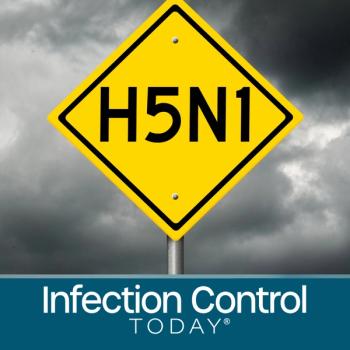
COVID-19 Vaccine Candidate Induces Immune Response in All Phase 1 Participants
New findings show the vaccine candidate mRNA-1273, encoded with a stabilized prefusion SARS-CoV-2 spike protein, induced anti-SARS-CoV-2 immune responses in all of the trial’s participants, without any trial-limiting safety concerns identified.
The Moderna
New findings reported in
Investigators described the immunogenicity profile of mRNA-1273 as “rapid and robust,” particularly noting the 100-mcg dose vaccine eliciting high neutralization responses, Th1-skewed CD4 T cell responses, as well as a reactogenicity profile more favorable than the observed higher and lower doses.
The findings, reported by the mRNA-1273 Study Group, supports the advancement of a 100-mcg dose vaccine to a phase 3 trial assessment in later summer 2020, while a phase 2 trial of a pair of different doses of the potential vaccine continue among 600 healthy adults.
Moderna, along with The National Institutes of Health (NIH), announced the beginning of the phase 1 trial in mid-March.
In mid-May, the US Food and Drug Administration (FDA)
The team reported that antibody responses were greater among higher doses—as per day 29 enzyme-linked immunosorbent assay anti-S-2P antibody geometric mean titer (GMT)—after the first vaccination dose. GMTs were 40,227; 109,209; and 213,526 among the 25 mcg, 100 mcg, and 250 mcg groups, respectively.
Following the second vaccination, serum neutralizing activity was detected by 2 methods in all participants. Values were generally similar to those in the upper half of the distribution of a panel of control convalescent serum specimens.
Adverse events, including fatigue, chills, headache, myalgia, and injection site pain, occurred in a majority of patients. Systemic adverse events were more frequent following the second vaccination dose—particularly among the 250 mcg treatment arm, as 3 reported ≥1 severe adverse event.
Overall, mRNA-1273 showed signs of an immunogenic vaccine, inducing “robust binding antibody responses” to both full-length S-2P and receptor-binding domain in every participant following first vaccination.
“Seroconversion was rapid for binding antibodies, occurring within 2 weeks after the first vaccination, but pseudovirus neutralizing activity was low before the second vaccination, which supports the need for a two-dose vaccination schedule,” investigators wrote.
Though both binding and neutralizing antibody titers induced by the two-dose schedule in participants were similar to those observed by researchers in convalescent serum specimens, they stressed that COVID-19 convalescent antibody titers are variable due to patient age, disease severity, and time since disease onset.
Investigators added to what may be the first sign of an effective vaccine to SARS-CoV-2 a significant benefit of rapid manufacturing through the familiar mRNA platform.
“Product development processes that normally require years were finished in about 2 months,” they wrote. “Vaccine development was initiated after the SARS-CoV-2 genome was posted on January 10, 2020; manufacture and delivery of clinical trials material was completed within 45 days, and the first trial participants were vaccinated on March 16, 2020, just 66 days after the genomic sequence of the virus was posted.”
The discussion of what would constitute a beneficial COVID-19 vaccine for the greater population has been one of debate—yet most experts have given consideration to the variable nature of the virus, its transmission, and effects on patients.
In setting a mark for overall efficacy, Schaffner was more ambitious than the FDA's guidance.
“We would hope for something that is over 80% effective,” he said. “We have to, I think, in the 21st century, have a product that is at least 80% effective. They would hope for more, of course.”
Now that Moderna's phase 3 trial dose has been finalized at 100 mcg,
This story originally appeared in
Newsletter
Stay prepared and protected with Infection Control Today's newsletter, delivering essential updates, best practices, and expert insights for infection preventionists.





